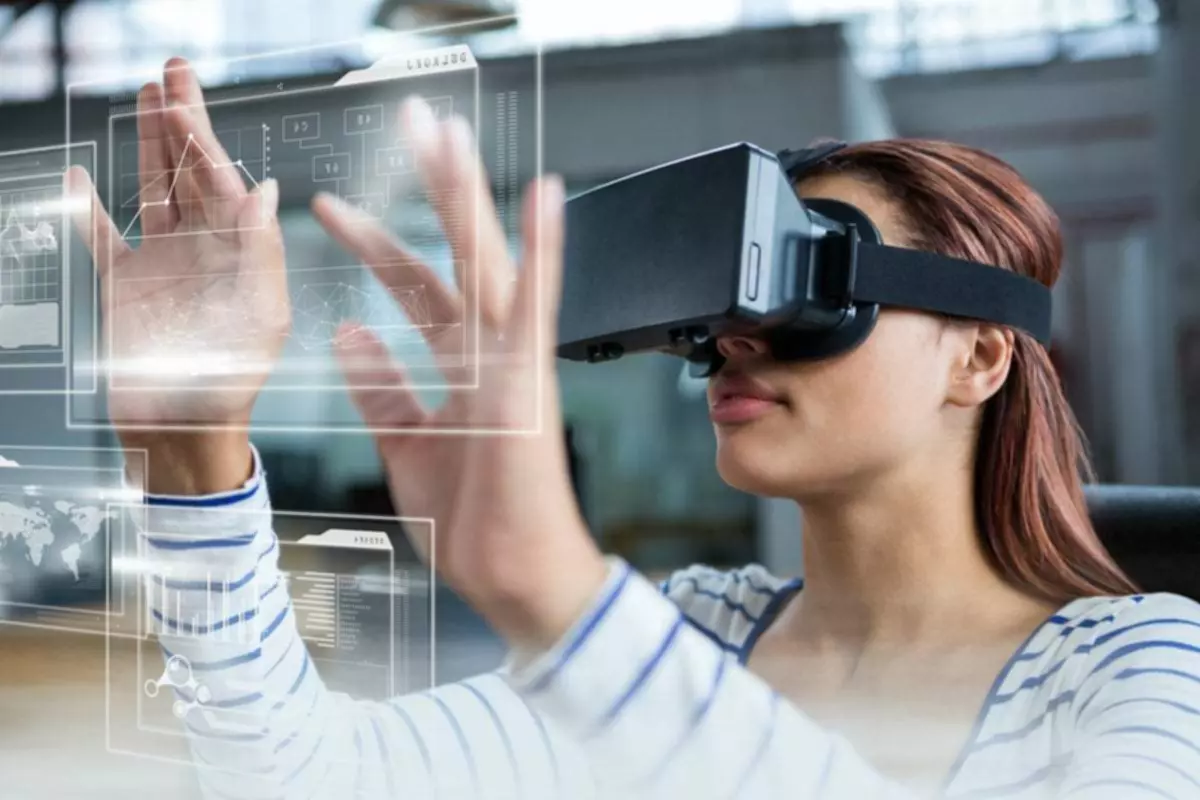Types of Enterprise Systems and Their Applications
Content
When done well, enterprise information systems make it easier for people to complete their work in a timely and accurate manner. They also enable the university to standardize and streamline its operations. By contrast, poor quality enterprise systems can actually increase workloads, lead to frustration among the people who use them, and cause costly operational disruptions.

The basic processes of an information system include input and output processes, coordination processes, and decision-making processes. To build an information infrastructure for the identification and planning of all resources of the organization . Reading a business-related examples of enterprise information systems documentation often can feel like trying to understand a foreign language. Between confusing specialized abbreviations, complicated technical names and other bits of information, it’s natural for your eyes to glaze over after just a few seconds.
2 Social Platforms
It is an online service, and we can use it from anywhere as long as we have an internet connection. MIS is used to generate reports that help managers make informed decisions about the company’s operations. For example, MIS can be used to generate reports on sales figures, inventory levels, and employee productivity.
- They’re useful in such diverse areas as medical diagnosis, portfolio management, and credit assessment.
- The data architecture is composed of enterprise models, policies, rules and standards that govern which data is collected, and how it is stored, arranged, integrated, kept secure and put to use.
- CRM is mainly focused on data processing, interaction with buyers, improvement of marketers’ job.
- A management information system is a computerized system that provides managers with the information they need to make informed decisions about the operation of their business.
- Integrate transportation management and administer warehouse assignments with asset utilization and throughput with top picking, packing and shipping styles.
- As more firms begin to incorporate onboarding and knowledge management into their overall business strategy, some are showing tremendous interest in leveraging these management processes and technologies.
The Chief Digital Officer has an external customer interaction focus, and works to improve the value of interactions with user and customers. The Chief Data Officer focuses on information, how data assets can be turned into useful and timely information, its accuracy, and the policies needed to protect it for its intended use. At the design stage the main characteristic of EIS efficiency evaluation is the probability of timely delivery of various messages such as command, service, etc. Process in which information is used for a specific purpose, such as decision-making or setting objectives.
What Is an ERP System?
The software can automate distribution scheduling that often takes up precious employee time. This module or standalone accounting software can facilitate payroll, budgeting, billing and banking operations. It can conduct cost analyses to better manage cash flow and forecast future growth. Using an ERP product to perform these functions can reduce human error and help cut costs.

Not only does it help to track employee progress and identify areas of improvement, but it also provides a valuable reference point in the event of a dispute or disciplinary issue. There are a number of different ways to keep track of employee information, employee performance record but the most important thing is to ensure that the system is easy to use and accessible to all employees. Our brief list of ERP system examples aims to show the variety of products and service models available in 2023. Many other options come in a variety of shapes and sizes, ensuring virtually any business can find the right fit. With all the possibilities, it’s a rare company that won’t stand to benefit from an ERP system. Epicor scraps the one-size-fits-all theory for EPR solutions, eschewing the popular model that builds optional add-ons atop a single generic base system.
In essence, the machine learning tools offer buffer-level adjustments with lead time on stock transfer ingredients to guarantee inventory is kept at satisfactory values while reducing capital. The situations-handling extension offers different solutions through the monitor material coverage app to https://globalcloudteam.com/ cover issues related to net requirements, individual customers and direct procurement segments for all materials. Clone orders, build and save order templates with default payment and shipping options and conduct bidding support for diverse configurations with grouped subtotals on the same bids.
Lack of Effective Information Systems at LSSF to Support Cloud ERP
Most daily activities are recorded and processed by a transaction processing system, which receives input data and converts them into output—information—intended for various users. At Caesars, an expert system called the Revenue Management System helps to optimize the overall profitability of both hotel and casino operations. When a customer requests a room, the program accesses his or her profile in the database and consults certain “rules” for assessing the application .

The global penetration of the Internet and the Web has enabled access to information and other resources and facilitated the forming of relationships among people and organizations on an unprecedented scale. Digital systems help organizations increase the efficiency of their activities, control the work of different departments better, share knowledge and enhance transparency in business processes. Enterprise software development offers great benefits to the regular workflow and elevates its productivity.
In any case, it is always possible to develop a custom solution that would be secure, transparent, and suitable for your company. Try to remember the last time you gathered the information for a serious decision. You’ve probably done most of the work manually, creating charts, opening different tools, and analyzing all kinds of paperwork. Business Intelligence software can help you reduce the effort and provide even better results. In project management, an ERP helps leaders optimize the general workflow and understand the needs of different teams. It’s a great tool to get a broad view of what’s going on and where to apply some changes for better results.
Below we will consider the most widespread types of enterprise systems. Enterprise software systems are computer programs used by organizations to streamline their internal and external processes, data, reports and analytics flows. Similarly, thesupply chainmodule monitors products from the point of manufacturing to distribution. Notable features include inventory, purchasing, shipping, tracking, refunds, claim processing, and supplier scheduling.
Design and Production Systems
Computer networks enabled many process to become entirely digital, ensuring the proliferation of information, as well as drastically increasing the amount of data created, stored, moved, and consumed. EIT professionals accomplish these things by building on existing national and international standards and frameworks and by relying on the knowledge of experts who develop guides to the specialized bodies of knowledge. Figure 2 reflects how standardized professional knowledge is used as a basis to provide secure, interoperable, and high-quality information technology to the enterprise. They are those people who are responsible for collecting and organizing the information. In many cases, they are also responsible for loading the data both on physical media and on software or virtual platforms.

Enterprise information systems have both operational (transaction-processing) and informational functions. While the three types of the software listed above are the major options for most companies, there is still a set of other applications with separate functions. From a broad perspective, an SCM simplifies the daily routine for all workers who supply, deliver, and sell a business’s product. This app focuses on gathering information about your customers and their interactions. As a result, you get all the info to improve the work of your departments.
CRM Systems
The CRM module makes it possible forbusinesses to manageclient operations, such as marketing, sales, and customer service. Users can also employ CRM in marketingoperation management, including advertisements and lead generation campaigns. Earlier, in large organizations, different information systems were used to serve different business functions like sales, marketing, production, manufacturing, etc., separately. Knowledge management and collaboration systems are ways that members of the organization capture and institutionalize organizational knowledge. The most familiar types of systems are internal websites for the company as well as blogs and wikis. However, leading organizations will also require that reports be filed in a systematic way to allow for easy retrieval in case the organization encounters a similar business problem in the future.
What is meant by management information system?
Each employee can log in to the system and enter time worked and manage benefits and vacation time. ERP systems can automate payroll processes, removing the need for an extensive payroll department. CRM systems are their own standalone software, but robust ERP systems come with a CRM built in, eliminating the need for integrations with one streamlined product. In this scenario, a couple of ERP capabilities work together to ensure a company will have the products that their customers want, and ultimately, improve customer satisfaction.
Best Examples of Information Management Systems (IMS)
This is possible due to the real-time data processing capabilities of MIS, which enables managers to have up-to-date information on their disposal at all times. ERP provides a software infrastructure to link disparate elements of a company, but perhaps less appreciated is the connection this facilitates among a company’s various human components. Because departments share similar interfaces when interacting with an ERP system and can see each other’s data, one group never has to be totally in the dark about what’s going on with another side of the company. When managers from a sales department and a marketing department, for example, can observe the same figures and trends, opportunities are enhanced for collaboration and cross-departmental workflow optimization. With a consolidated database as its foundation, ERP systems can be built out to accomplish a seemingly limitless variety of management and tracking functions.
Leading management theorists have popularized the concept of treating organizational knowledge as a valuable strategic asset. As more firms begin to incorporate onboarding and knowledge management into their overall business strategy, some are showing tremendous interest in leveraging these management processes and technologies. With the introduction of web access to ever widening sources of data, EIT has become responsible for ever-larger data lakes and data pools.
Process in which data is classified and stored, this can occur on physical or digital media. This can be done manually or through technologies such as scanners or barcodes. Successful customer will purchase so many things in future from a reliable buyer. Our website is a unique platform where students can share their papers in a matter of giving an example of the work to be done. If you find papers matching your topic, you may use them only as an example of work. Also you should remember, that this work was alredy submitted once by a student who originally wrote it.
